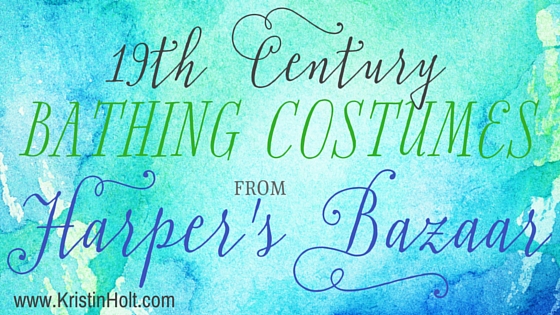
by Kristin Holt | Feb 26, 2018 | Articles
19th Century Ladies Fashions included gigantic sleeves known by many names: Leg of Mutton, Marquise, Balloon, etc. Highly fashionable, women wore them to work at home, to “walk out”, to sit for photographs, and on their wedding days. Highly fashionable for a period of time in the 1890s (through the turn of the century), they’ve returned at least twice: mid 1980s and in 2016. A favorite? You decide.

by Kristin Holt | May 18, 2017 | Articles
An unnamed Dress Reformer, utterly against “tight lacing” (corsets), uses the art of poetry to explain that everything that ills a woman–from her attitude to her nature, from length of life to a red-tipped nose–is all a result of the ill-fated habit of tightly cinched corsets. This vintage newspaper publication is an example of the American Victorian’s use of humor to blame fashion on craziness with a price too steep to pay.

by Kristin Holt | May 13, 2017 | Articles
Despite the voice of reason from scientists of the day, medical doctors, dress reformers, nineteenth century women continued to cling to advertisements claiming health depended upon corsets and laced tightly to achieve the beautiful figure they desired. Advertisements didn’t promote mere beauty–they went so far as to claim health. A newspaper article published in Chicago Daily Tribune of Chicago, Illinois, on April 24, 1897 spoke of Roentgen’s Light–X-rays–and the malformation caused by lacing. Today, the argument seems sound, prudent, and almost laughable that anyone fell for corsets.

by Kristin Holt | May 7, 2017 | Articles
Dr. Richardson, a London physician, spoke against corsets (tight lacing) and the damage thereby inflicted upon women’s intellect. This article was syndicated from New York Times and appeared in Kansas Farmer on May 5, 1880.

by Kristin Holt | Aug 11, 2016 | Articles
Harper’s Bazar (also spelled ‘Bazaar’, later on) is a Ladies Magazine founded in the Victorian Era. This article highlights bathing costumes (swimming suits) featured in Harper’s Bazar from the 1870s through early 1890s.













